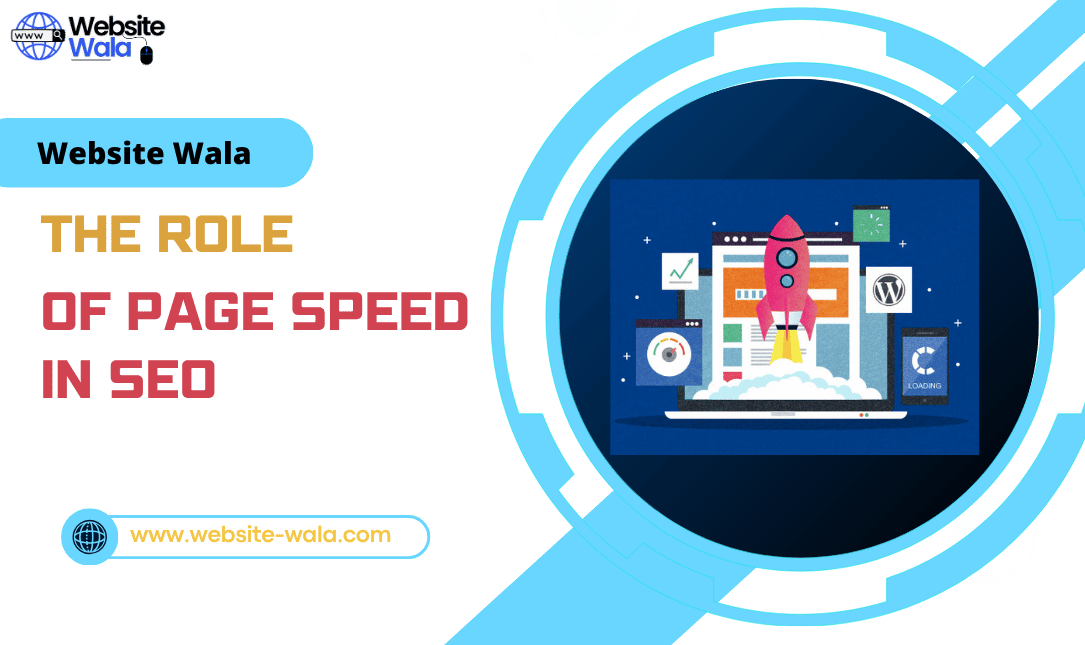
Discover the role of page speed in SEO and how enhancing page speed boosts website rankings, performance, and user experience.
Understanding The Role of Page Speed in SEO
In the digital era, website speed has become a critical factor for success. When discussing SEO strategies, many overlook the subtle yet significant impact of page speed. The Role of Page Speed in SEO extends beyond just technical optimization—it directly influences user engagement, website visibility, and overall website performance. Search engines prioritize fast-loading websites, rewarding them with higher website rankings and better visibility in search results.
Page speed refers to how quickly a webpage loads and becomes interactive for users. With the rising expectations of online users, even a delay of a few seconds can drastically impact bounce rates and conversions. Consequently, understanding the role of page speed in SEO is crucial for businesses seeking long-term online growth.
Why Page Speed Matters for SEO
The Role of Page Speed in SEO is tightly linked to both technical and experiential aspects of search engine optimization. Google and other search engines consider page loading speed as a ranking factor. A slow website can harm your search engine rankings, reducing your visibility and limiting organic traffic.
From a user perspective, page speed directly affects engagement. Visitors expect a seamless experience, and delays can lead to frustration, causing users to leave before interacting with your content. Therefore, enhancing page speed is not just about satisfying search engines but also about improving user experience and retaining potential customers.
The Connection Between Page Speed and Website Visibility
Website visibility is crucial for online success. Faster websites are indexed more efficiently by search engines, improving the likelihood of appearing in top search results. The website speed impact on SEO cannot be overstated; sites that load quickly are favored for higher rankings.
For example, e-commerce sites that optimize page speed see higher conversion rates, while content-driven platforms with slow loading times experience higher bounce rates. Implementing page speed optimization techniques ensures your website is competitive, visible, and aligned with modern SEO practices.
Key Factors Affecting Page Speed
To understand the role of page speed in SEO, it's important to identify elements that influence load times:
-
Image Optimization: Large, uncompressed images slow down websites. Compressing images without sacrificing quality improves page loading speed significantly.
-
Browser Caching: Efficient caching reduces repeated server requests, enhancing website performance.
-
Server Response Time: A slow server affects website speed and, consequently, search engine rankings.
-
Render-Blocking Resources: CSS and JavaScript can delay page rendering. Minimizing these files ensures faster load times.
-
Mobile Optimization: With the increasing use of mobile devices, responsive and fast-loading sites are essential for both user experience and SEO.
Addressing these factors is a vital component of website optimization, directly improving website rankings and overall site efficiency.
Techniques for Enhancing Page Speed
Implementing effective SEO strategies involves proactive page speed optimization. Below are some practical techniques to improve website performance:
-
Minimize HTTP Requests: Reducing scripts, stylesheets, and other resources decreases load time.
-
Enable Compression: Using Gzip or Brotli compression reduces file sizes for faster loading.
-
Leverage Content Delivery Networks (CDNs): CDNs store copies of your site in multiple locations, delivering content faster to users worldwide.
-
Optimize CSS and JavaScript: Minifying and combining files reduces render-blocking issues.
-
Implement Lazy Loading: Loading images or videos only when needed can significantly enhance page speed.
These methods not only improve website speed but also contribute to higher website rankings and improved user experience, emphasizing the role of page speed in SEO.
Measuring Page Speed for SEO Success
Monitoring website performance is essential to maintain high standards in search engine optimization. Tools like Google PageSpeed Insights, GTmetrix, and Pingdom provide detailed insights into page load times and recommendations for improvement. Key metrics to focus on include:
-
First Contentful Paint (FCP): Measures when the first element is visible to users.
-
Largest Contentful Paint (LCP): Indicates when the main content is fully loaded.
-
Cumulative Layout Shift (CLS): Assesses visual stability during page loading.
-
Total Blocking Time (TBT): Evaluates responsiveness during page load.
Tracking these metrics helps website owners identify bottlenecks and implement website optimization strategies that enhance page speed, ultimately boosting website visibility and search engine performance.
The Benefits of Fast Page Speed for SEO
Understanding the role of page speed in SEO reveals several tangible benefits:
-
Improved Website Rankings: Faster sites receive favorable treatment in search engine algorithms.
-
Enhanced User Experience: Users stay longer and engage more with content when pages load quickly.
-
Higher Conversion Rates: E-commerce and service sites experience fewer abandoned carts and higher sales.
-
Lower Bounce Rates: Quick-loading pages retain visitors, improving overall website engagement.
-
Better Mobile Performance: Mobile-first indexing prioritizes responsive and fast websites, crucial in today’s mobile-driven landscape.
In essence, enhancing page speed directly contributes to effective SEO strategies, ensuring a website is both user-friendly and search-engine-friendly.
Conclusion: The Strategic Importance of Page Speed
In the modern digital landscape, ignoring the role of page speed in SEO can have significant repercussions. From search engine rankings to user experience, page speed is a cornerstone of effective website optimization. Businesses that invest in enhancing page speed and adopt comprehensive page speed optimization strategies position themselves for better website visibility, higher website rankings, and sustainable online success.
By prioritizing website performance, focusing on critical metrics, and implementing best practices for website speed, brands can ensure their sites not only meet user expectations but also excel in search engine optimization. Understanding the role of page speed in SEO is no longer optional—it is a fundamental part of modern digital strategy.























